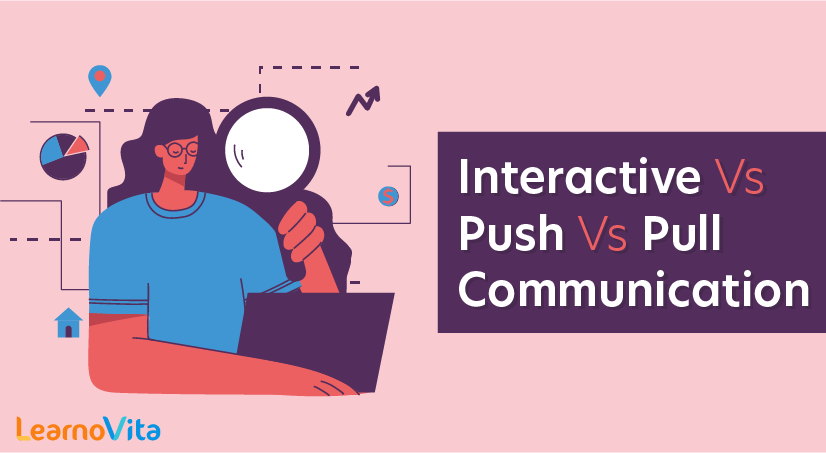
Interactive Vs Push Vs Pull Communication
Last updated on 06th Oct 2020, Artciles, Blog
Communication plays an important role in managing stakeholders, and for the successful completion of your project, you must keep your stakeholders satisfied.
Good communication skills coupled with correct communication methods can help you complete your project with minimal hassle. However, failing to do so can create many conflicts in your project.
Subscribe For Free Demo
Error: Contact form not found.
Types of Communication Methods
Though many types of communication exist such as verbal, non-verbal, formal, informal, written, and oral. They fall into three categories:
- Push Communication
- Pull Communication
- Interactive Communication
Push Communication
You use push communication when you want to send information to stakeholders. This method is useful for time sensitive information and when you expect to get feedback.
Push is a kind of broadcast and you as the sender control it, determine which stakeholders receive it, and at what time. You use this communication method when no urgent response is required from the stakeholders but some sort of action may be required from them after receiving the message.
For example, you want to have a presentation session with stakeholders, so you send them emails to invite them to the presentation.
Other examples are memos, letters, voice mails, etc.
The benefit of push communication is that it helps send information to a large pool of stakeholders quickly.
Pull Communication
You use pull communication when the information is general in nature.
For example, you upload some information on a central server and let stakeholders access it whenever they wish.
In pull communication method, stakeholders pull the information as per their requirements.
You use this communication method when the information is not urgent, not time sensitive and if some stakeholders miss the information, it won’t affect your project. You use this communication method when the information is for informational purposes only.
The benefit of this method is that the information can be shared with a very large number of stakeholders in the shortest possible time.
The disadvantage of this method is that you cannot track whether the information is received by a particular stakeholder or not, and whether the stakeholders understand the information once they have received it.
Other examples of pull communication are blog, intranet, lessons learned database, bulletin board, etc.
Interactive Communication
Push and pull communication are unidirectional and do not occur in real time, and they are not the most effective communication methods.
You cannot use these methods of communication when you need a quick resolution or if a tough negotiation is required.
In such cases you will use interactive communication. This is the most effective way to communicate as it is multidirectional and occurs in real time.
Here you meet with your stakeholders and discuss the issue, convey the information face to face and get their feedback instantly. The participants are also able to clear up their doubts immediately. In this method you can make sure that every stakeholder receives the correct information and understands it.
You use this method when the information is sensitive or urgent feedback is necessary.
Some examples of this communication method are meetings, workshops, video conferencing, training, etc.
The disadvantage of this communication is the difficulty in bringing all stakeholders together in one place. Sometimes a few stakeholders are not able to attend the meeting which can cause problems.
Communication skills are important skills to manage stakeholders. You can use any method of communication depending on the situation and the requirements; however, interactive communication helps you get feedback immediately and gets stakeholders to buy in. You will use push and pull communication when you have many stakeholders or if they are spread out in different geographic locations and the information is not classified or urgent.
Although push and pull communication methods require less effort and stress, the feedback obtained from these communications is not as good as what you get from interactive communication.
Summary
Every communication method is unique and used for its special purpose. These three communication methods should be part of your communication management plan and you must use them according to your stakeholders’ requirements and to benefit the project.
Are you looking training with Right Jobs?
Contact Us- Julia Tutorial
- “Microsoft Dynamics 365 Tutorial “
- Kafka Tutorial
- MS Project Tutorial
Related Articles
Popular Courses
- PMP Certification Training
11025 Learners - CAPM Certification Training
12022 Learners - Jira Training
11141 Learners
- What is Dimension Reduction? | Know the techniques
- Difference between Data Lake vs Data Warehouse: A Complete Guide For Beginners with Best Practices
- What is Dimension Reduction? | Know the techniques
- What does the Yield keyword do and How to use Yield in python ? [ OverView ]
- Agile Sprint Planning | Everything You Need to Know
